The next place I visited on my Buddhist pilgrimage in Sri Lanka was the Dambulla Cave monastery complex (Sinhala: Dam̆būlla Raja Maha Vihāraya), also known as the Golden Temple of Dambulla, situated in central Sri Lanka. Like Kelaniya, and the tooth relic temple in Kandy, the caves also have UNESCO world heritage site status (1991):
“A sacred pilgrimage site for 22 centuries, this cave monastery, with its five sanctuaries, is the largest, best-preserved cave-temple complex in Sri Lanka. The Buddhist mural paintings (covering an area of 2,100 m2 ) are of particular importance, as are the 157 statues….Inhabited by forest-dwelling Buddhist monks since the 3rd century BCE, these natural caves have been transformed continuously throughout the historical period into one of the largest and most outstanding Buddhist complexes in the Southern and South Eastern Asian region, showcasing innovative approaches to interior layout and decoration.”
The cave rock complex towers 160 m over the surrounding plains. There are more than 80 documented caves in the surrounding area. Major attractions are spread over five caves, which contain statues and paintings related to Gautama Buddha and his life. There are said to be a total of 153 Buddha statues, three statues of Sri Lankan kings and four statues of gods and goddesses. The latter include Vishnu and the Ganesha. The murals cover an area of 2,100 square metres (23,000 sq ft). Depictions on the walls of the caves include the temptation by the demon Mara, and Buddha’s first sermon.
In the heat and humidity of Sri Lanka, the twenty minute walk up some steps to the caves on the hill (which is not difficult) was sweaty and hot, but it was worth it though, the view of the sacred, ancient hills was magnificient.
Also, on entering the cool caves, the overwhelming beauty, serenity and artistic mastery to the paintings, statues and sculptures and in particular, the facial expressions of the Buddha statues (with eyes wide open) were a marvel and stunning to behold. The colours of red, gold, yellow and stone walls and stupas were warm and welcoming. Although it was quite touristy, compared to Kelaniya, it was not crowded like the big temples in Bangkok and Chiang Mai. The spiritual ‘energy’ of the caves and the statues and sacred objects in them could clearly be felt and experienced though. The faces of the Buddhas and their eyes of awareness could be gazed at endlessly, the perfect meditation object. Interestingly, some Tibetan Buddhist prayer flags hung from the main tree outside the cave complex, a sign that Buddhist pilgrims from all over the world had visited here.
In this article I share some of the historical and geographical background of the caves, information about getting there, my own experience visiting them, and some photos I took there.
The historical background to the Dambulla Caves: Caves of the Kings

It is said that prehistoric Sri Lankans would have lived in these cave complexes before the arrival of Buddhism in Sri Lanka as there are burial sites with human skeletons about 2700 years old in this area, at Ibbankatuwa near the Dambulla cave complexes. The Buddhist complex dates from the third and second centuries BC, when it was already established as one of the largest and most important monasteries. Valagamba of Anuradhapura is traditionally thought to have converted the caves into a temple in the first century BC. Exiled from Anuradhapura, he sought refuge here from South Indian usurpers for 15 years.
After reclaiming his capital, the King built a temple in thankful worship. Many other kings added to it later and by the 11th century, the caves had become a major religious centre and still are. Nissanka Malla of Polonnaruwa gilded the caves and added about 70 Buddha statues in 1190. During the 18th century, the caves were restored and painted by the Kingdom of Kandy.
Getting There from Kandy
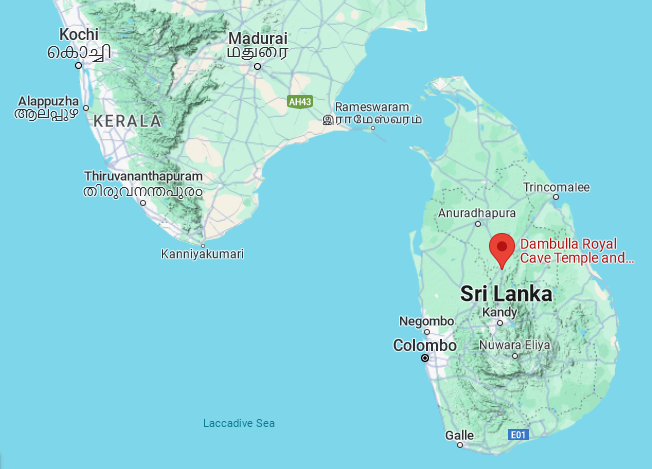
I hired a rickshaw driver from Kandy to the cave complex, because it is quicker, cheaper and easier as a solo traveller. It was hot and sweaty most of the way, despite the breezy open space, but only takes about an hour and a half drive so not a long distance. AC taxis are also available for those who want to pay more for creature comforts.
The Cave Complex
On arriving be sure to go to the correct entrance, as I was told that the back entrance where the Golden Buddha museum is located is not the ticket entrance, and some people had to then walk all the way back up and down from the caves again to the other side to get the ticket. The walk up the stairs was not demanding or long, but the heat and the humidity made it a sweaty and not so comfortable walk up. take a bottle of water to drink!
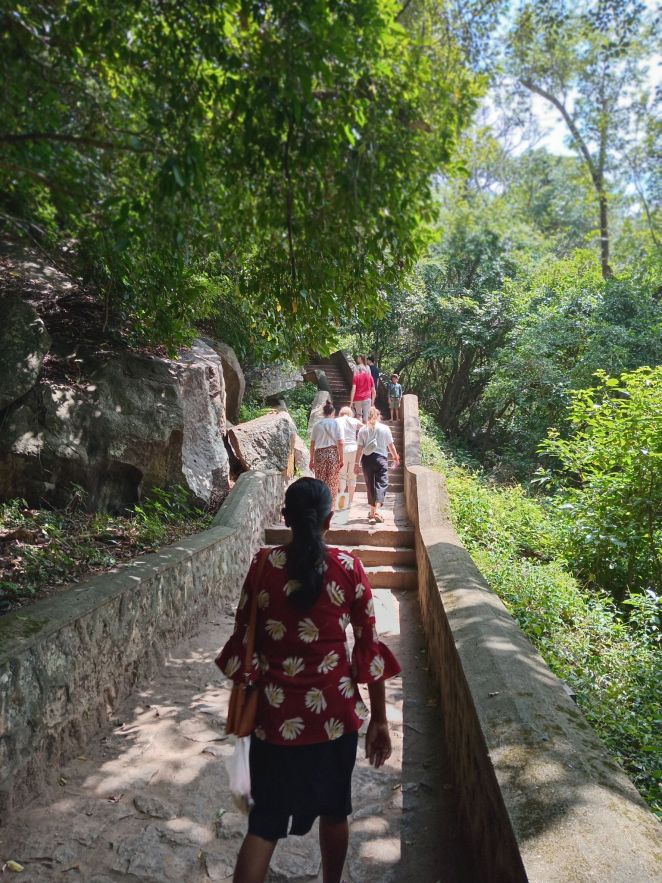
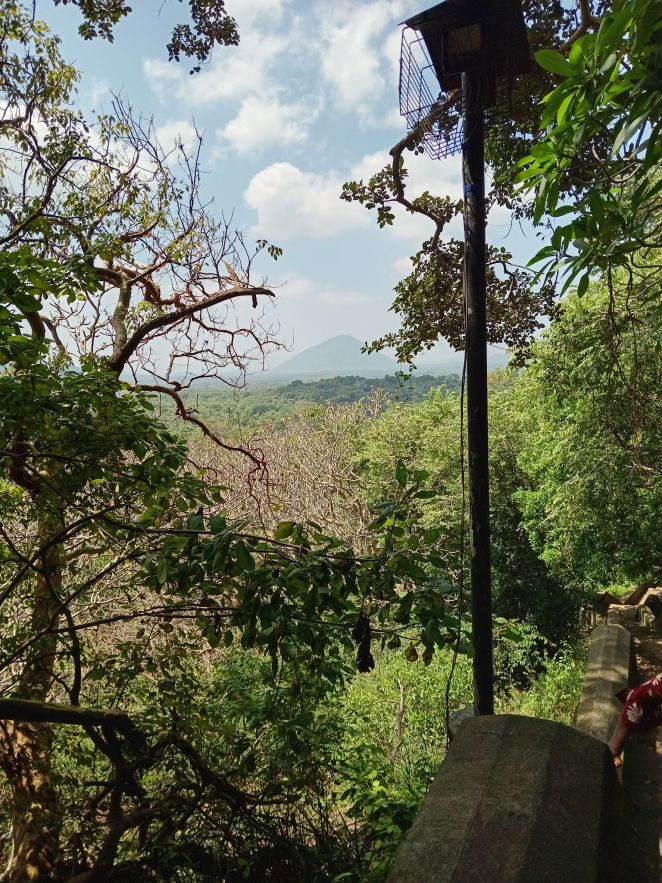
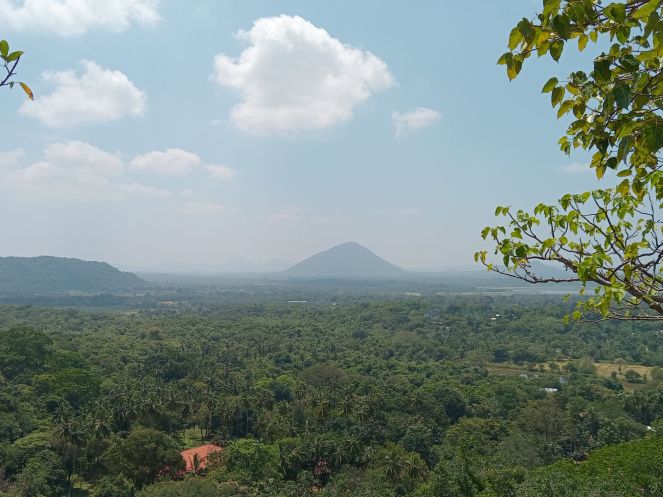
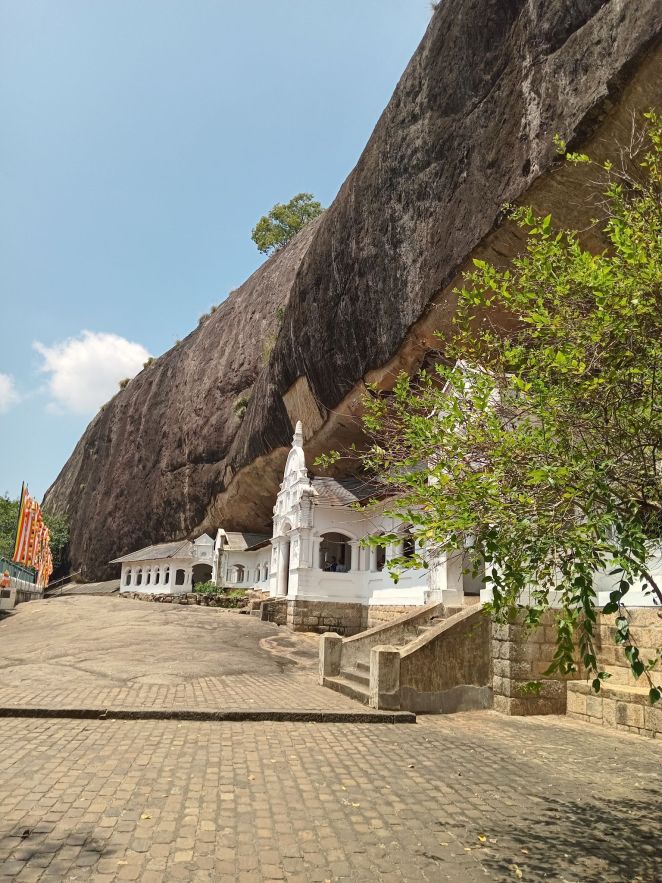
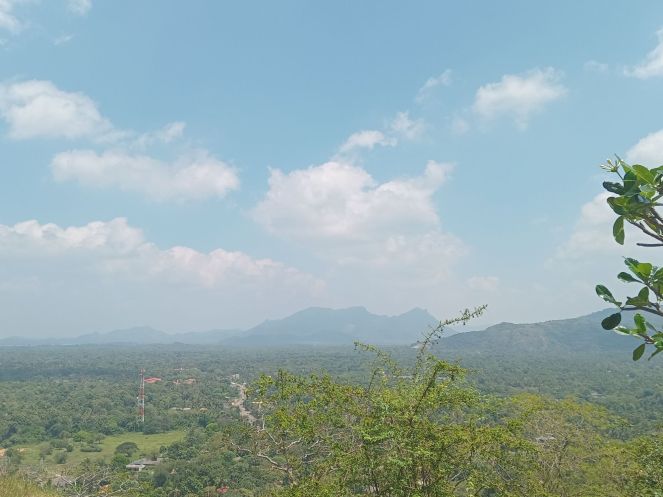

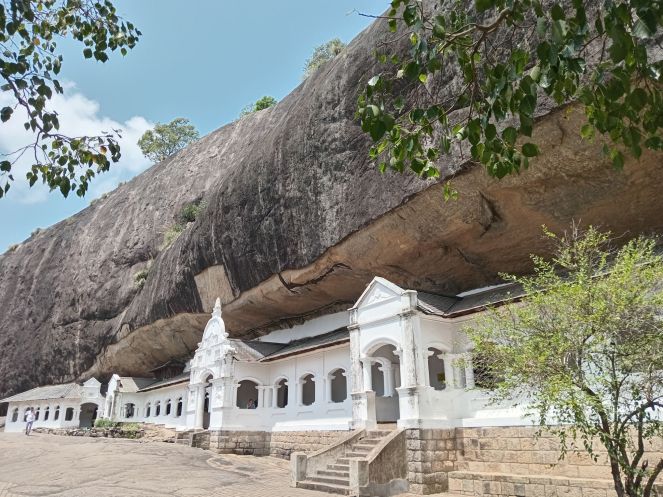
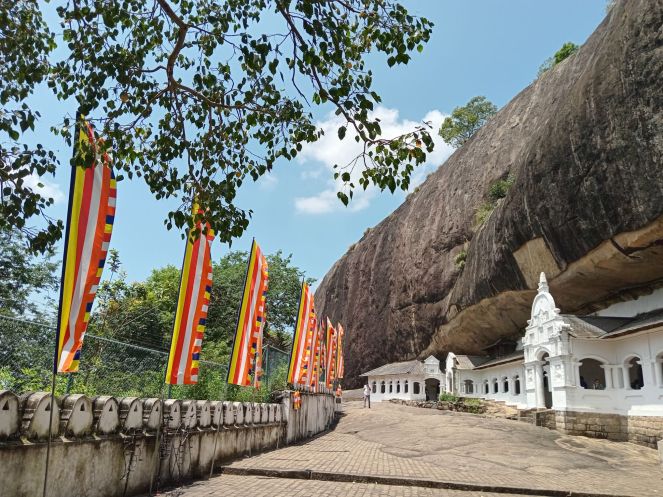
The Five Caves
The temple is composed of five caves built at the base of a 150m high rock. The largest cave is said to measure about 52m from east to west, and 23m from the entrance to the back, and is 7m tall at its highest point. Hindu deities are also represented here, as are the kings Valagamba and Nissankamalla, and Ananda – one of the Buddha’s renowned disciples.
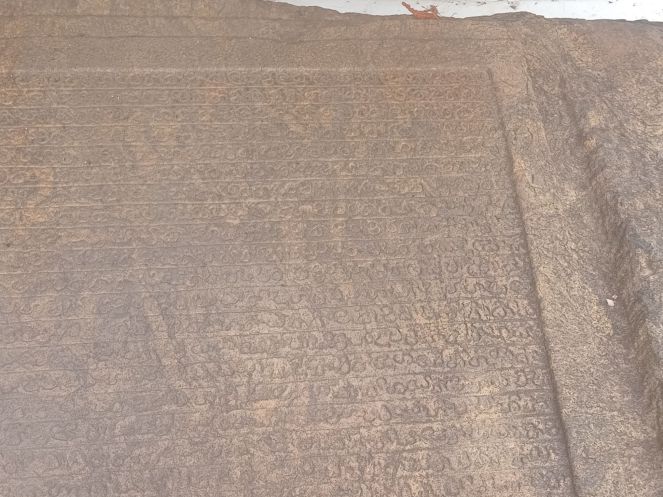

Cave of the Divine King
The first cave is called Devaraja lena (lena in Sinhalese meaning cave), or “Cave of the Divine King.” An account of the founding of the monastery is recorded in a 1st-century Brahmi inscription over the entrance to the first cave. This cave is dominated by the 14-meter statue of the Buddha, hewn out of the rock. It has been repainted countless times in the course of its history, most recently in the 20th century. At his feet is Buddha’s disciple Ananda; at his head, Vishnu, said to have used his divine powers to create the caves.
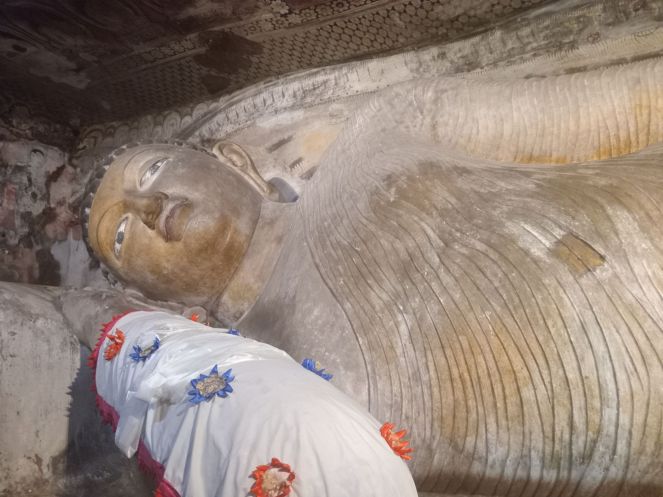
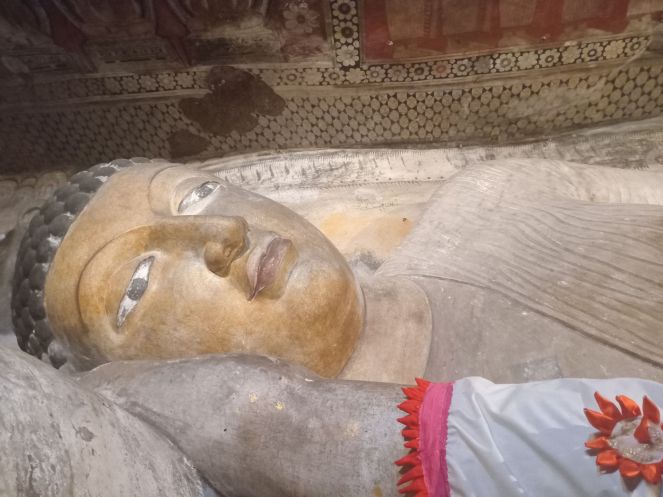
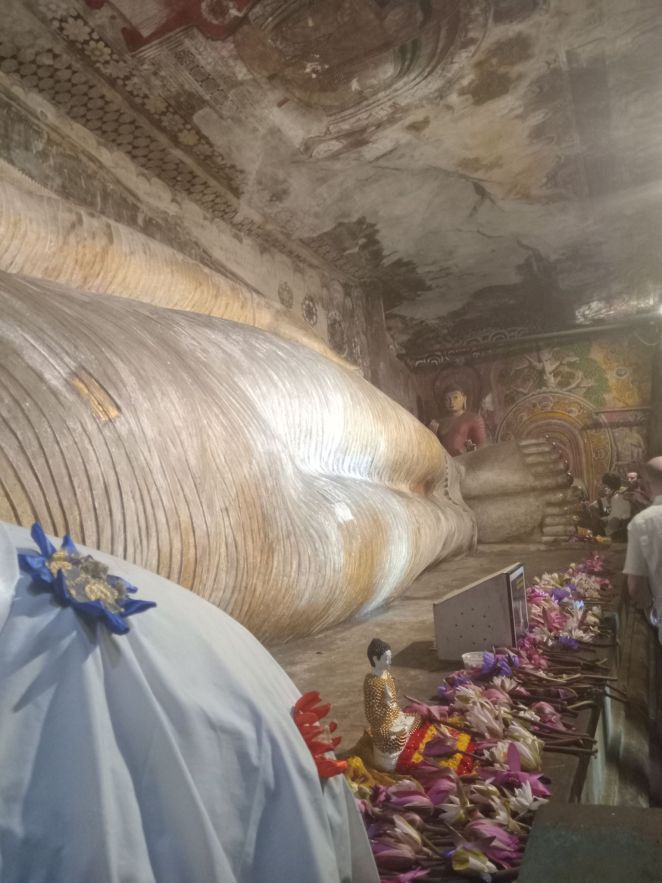
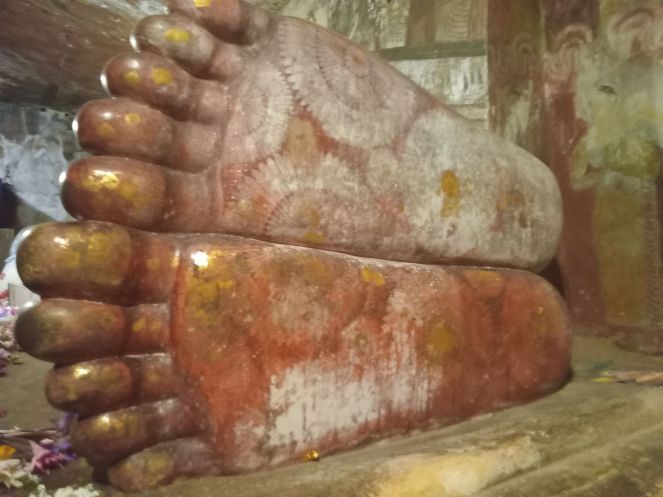
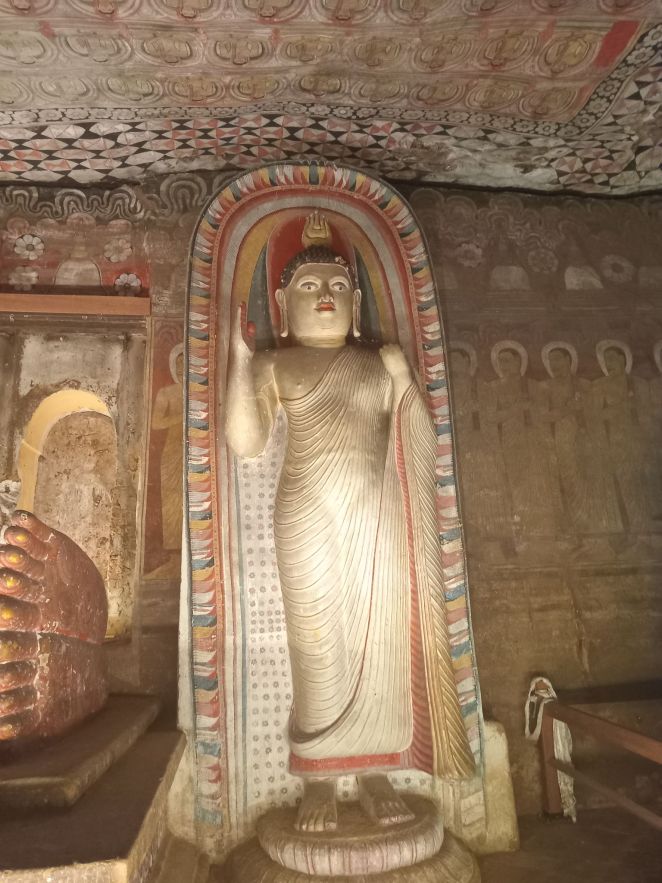

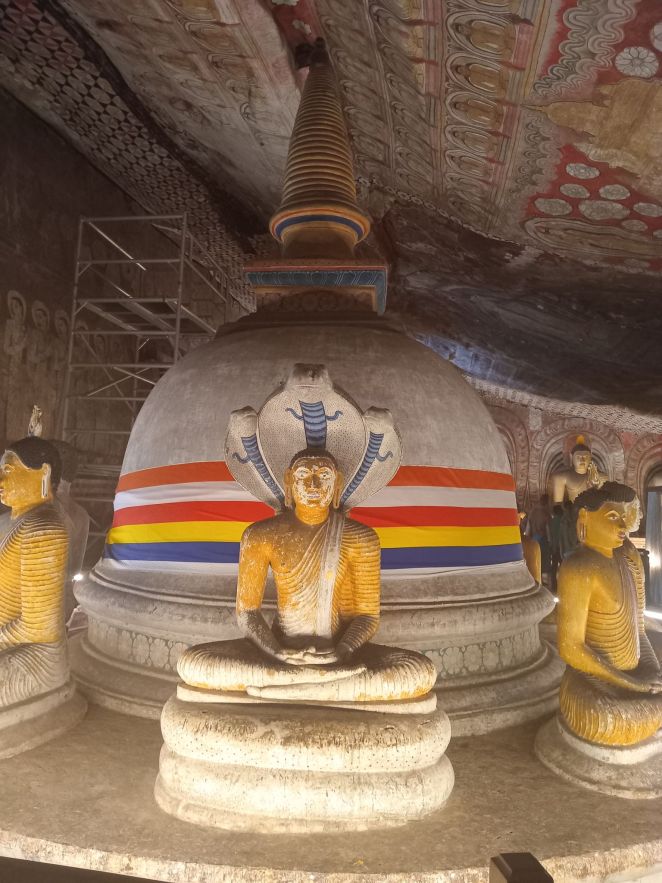
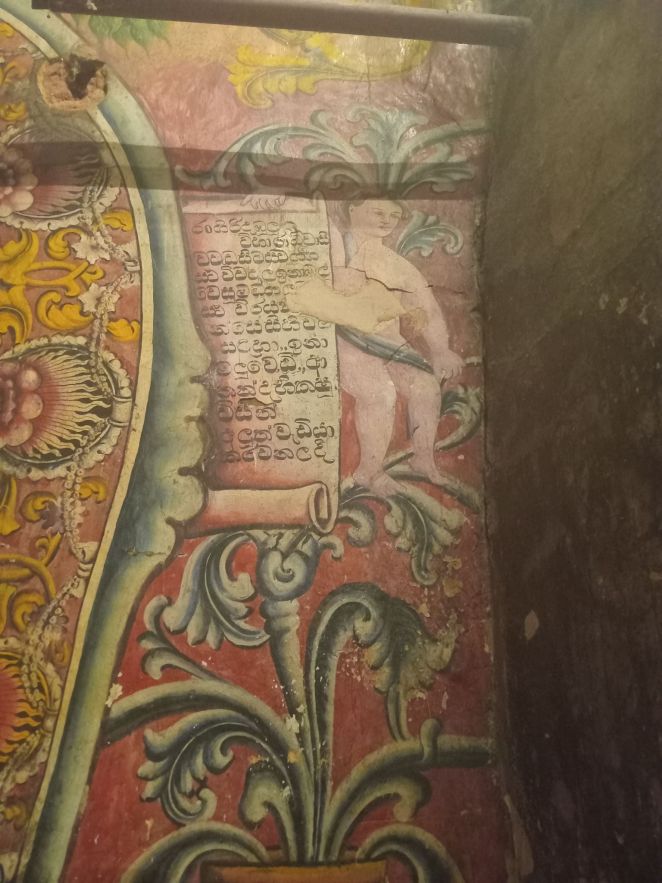
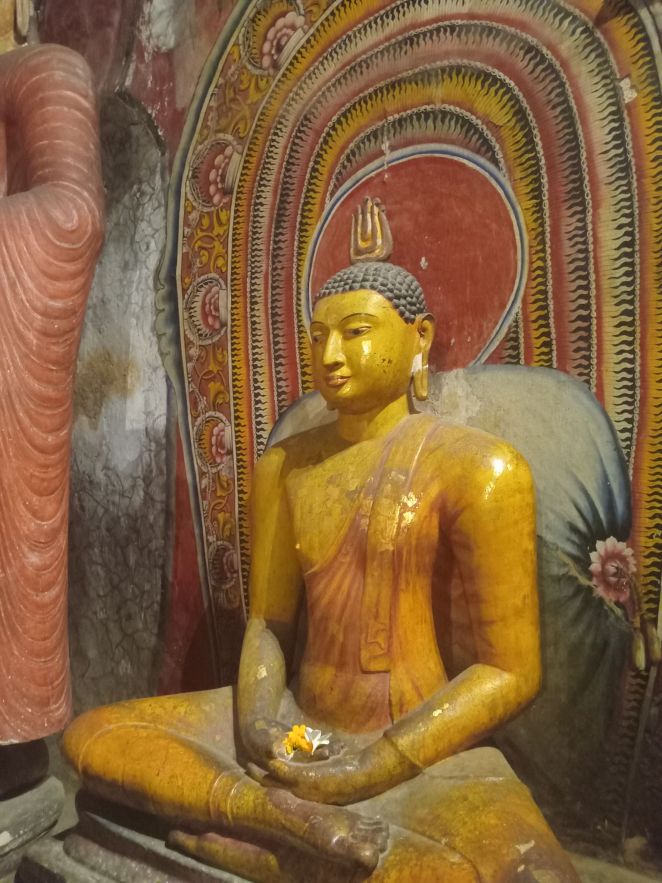
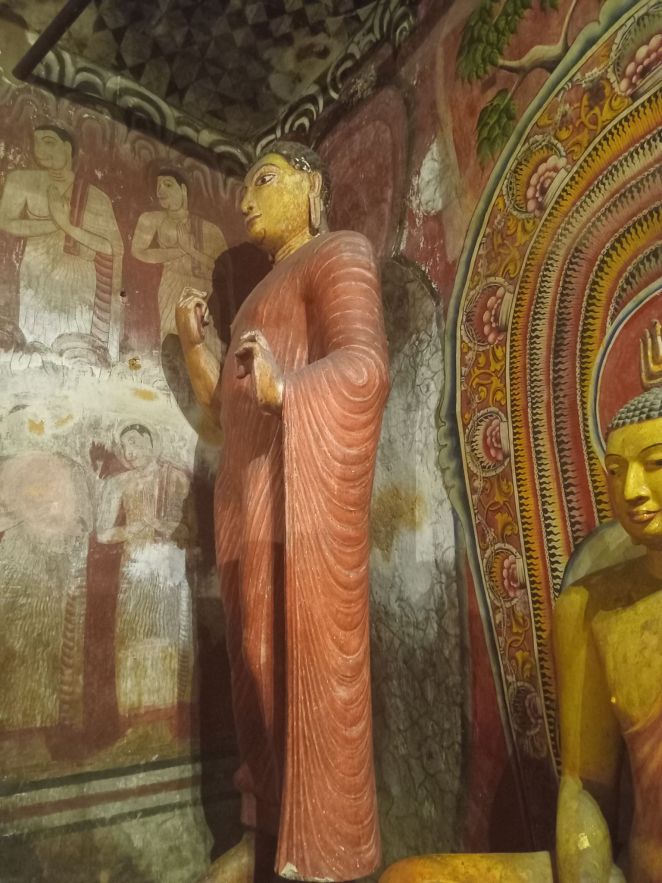
Cave of the Great Kings
In the second and largest cave, called Maharaja lena, “Cave of the Great Kings.” , the Buddha statue hewn out of the rock on the left side of the room is accompanied by wooden figures of the Bodhisattvas Maitreya and Avalokiteshvara or Natha. Distinctive tempera paintings on the cave ceiling dating from the 18th century depict scenes from Buddha’s life, from the dream of Mahamaya to temptation by the demon Mara. Further pictures relate important events from the country’s history.in addition to 16 standing and 40 seated statues of Buddha, are the gods Saman and Vishnu, which pilgrims often decorate with garlands, and finally, statues of King Vattagamani Abhaya, who honoured the monastery in the 1st century BC., and King Nissanka Malla, responsible in the 12th century for the gilding of 50 statues, as indicated by a stone inscription near the monastery entrance.
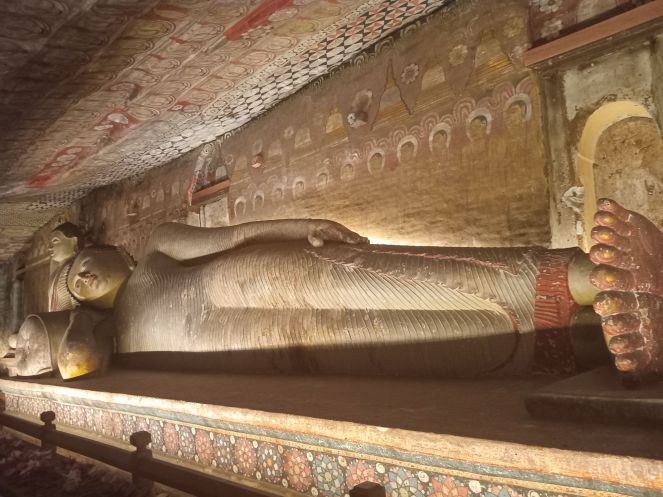
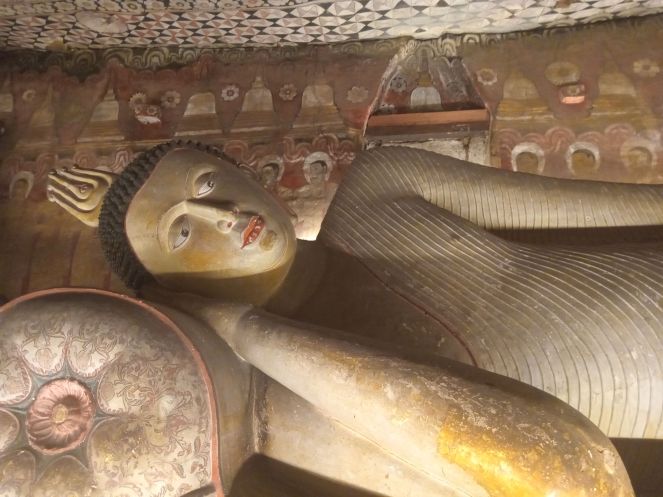

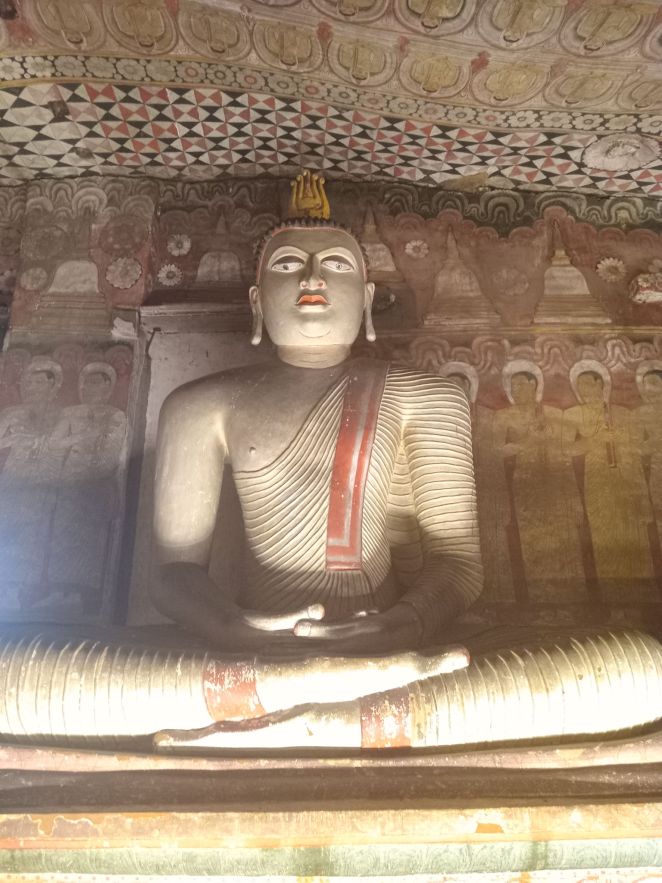

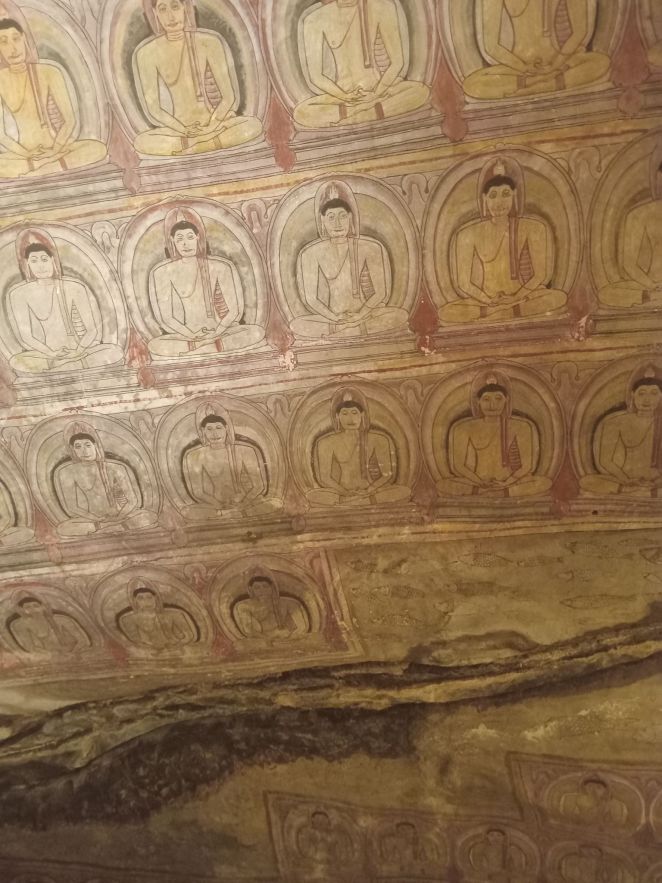
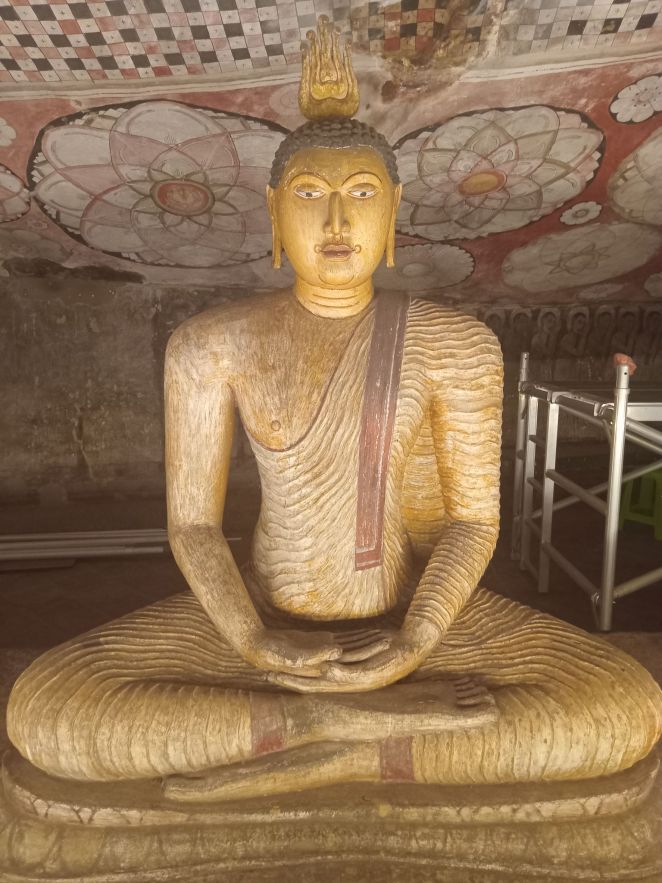

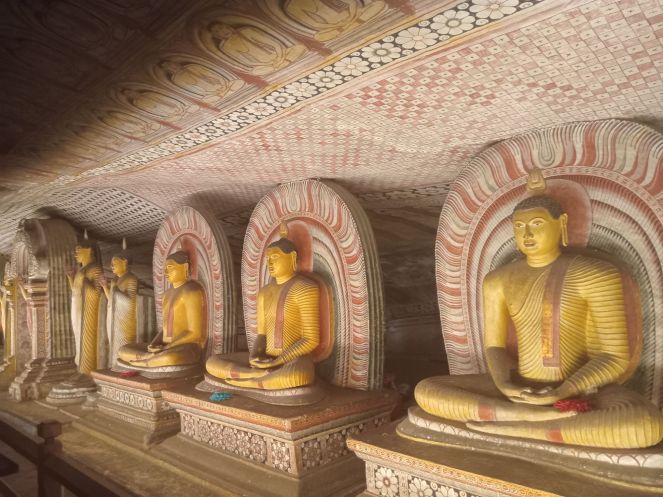
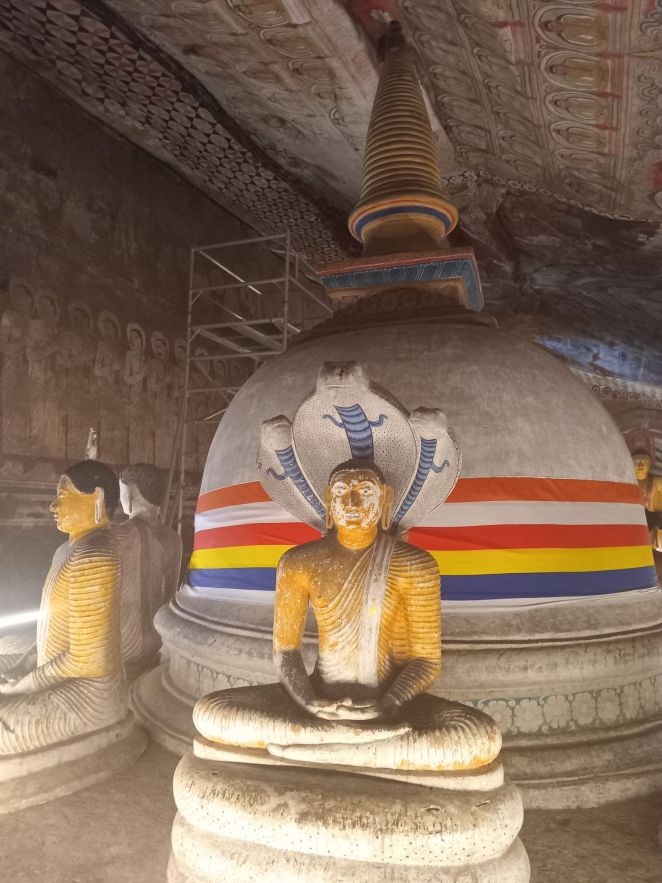

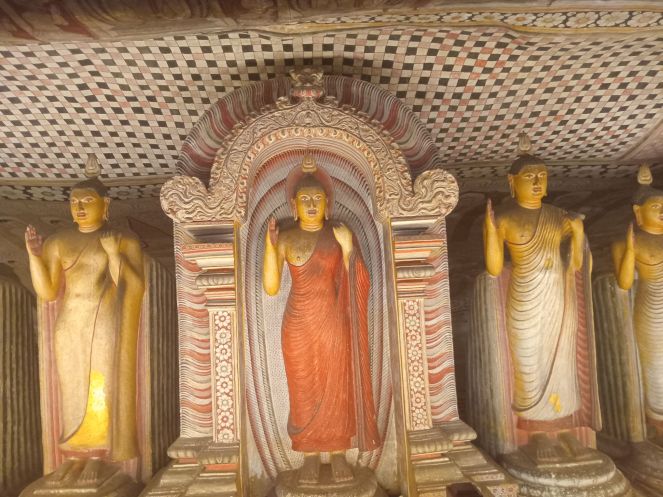
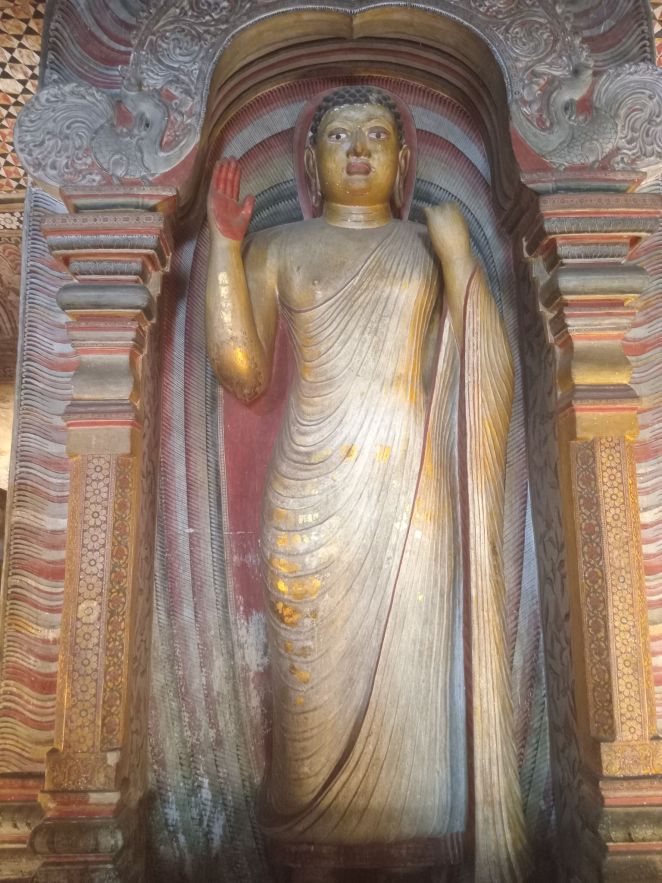


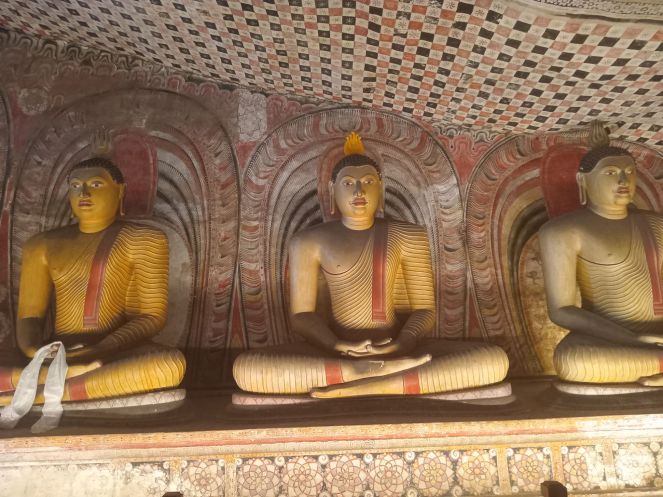
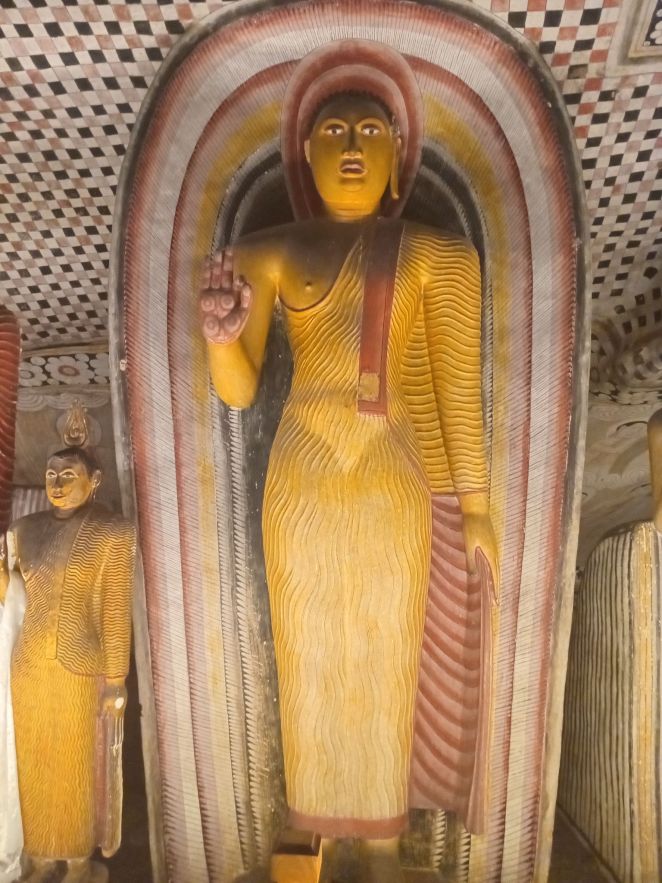


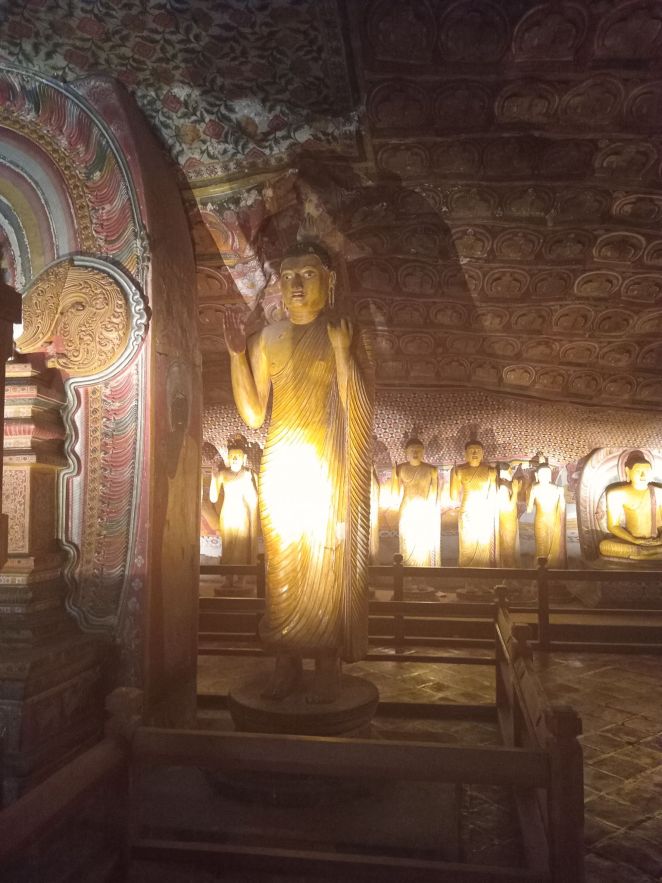


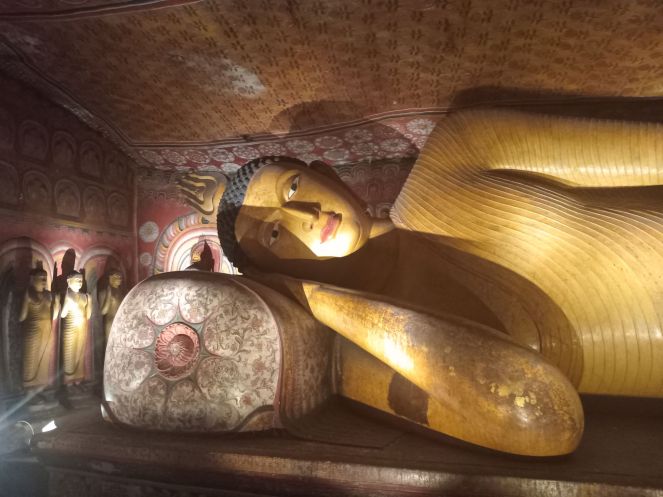

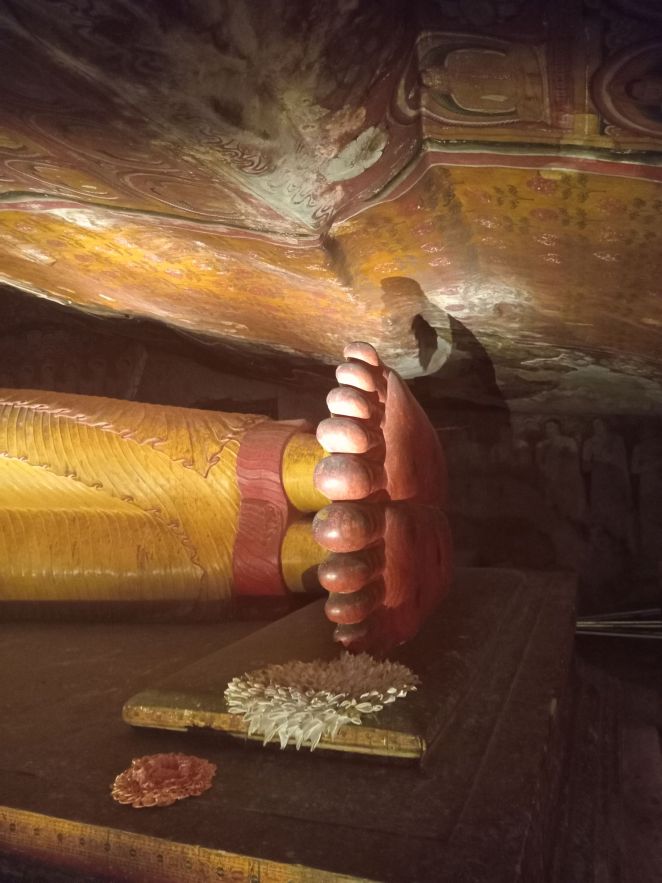
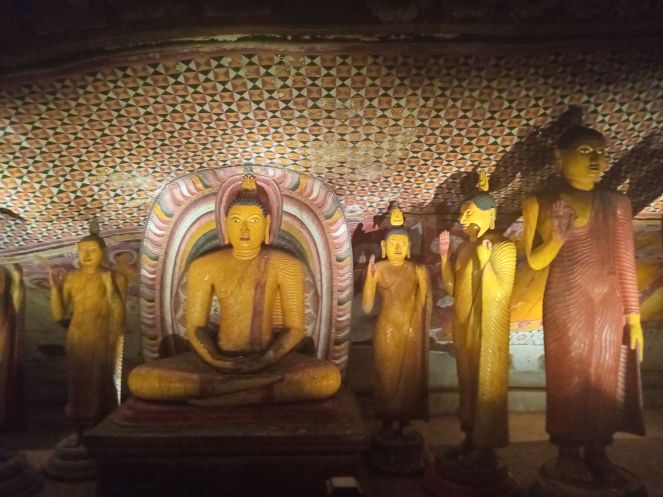
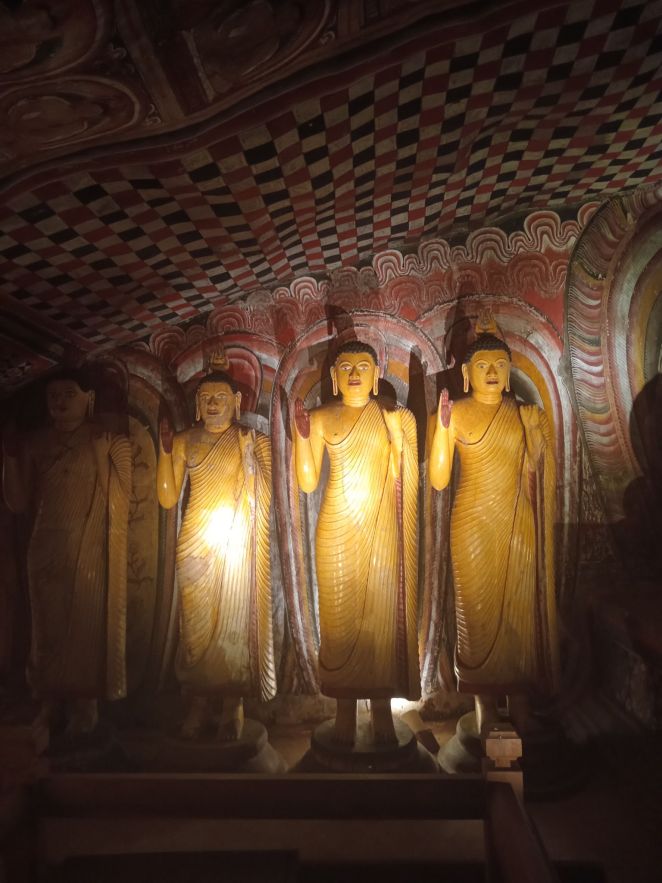
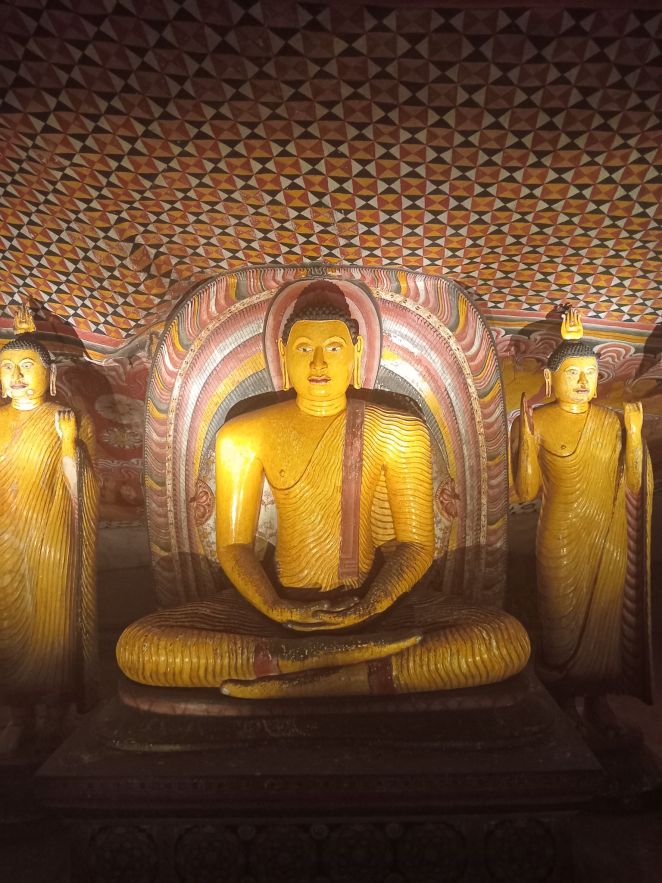
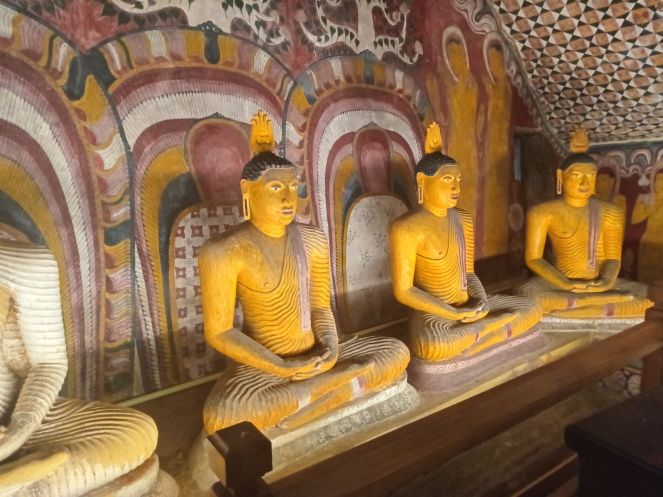
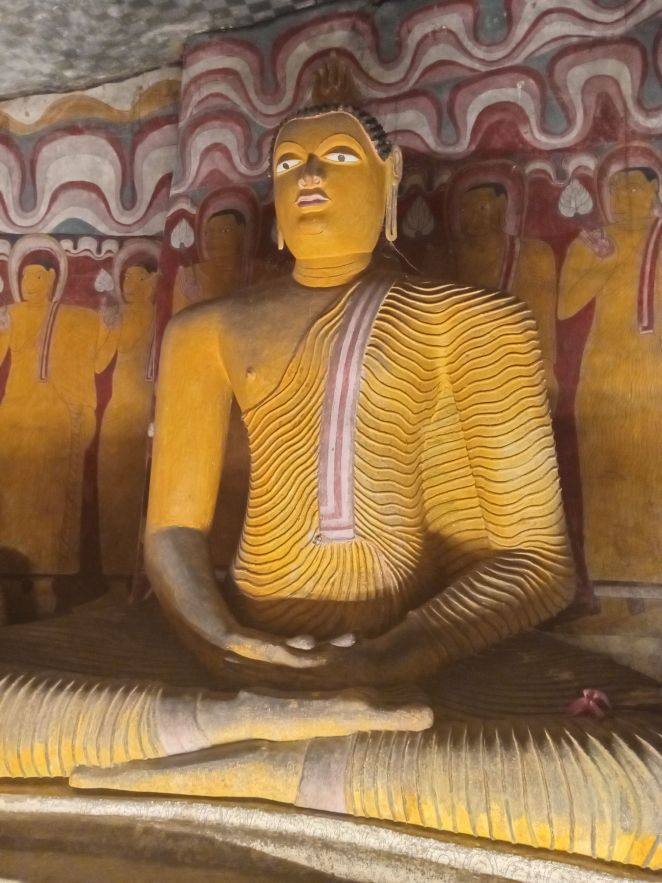

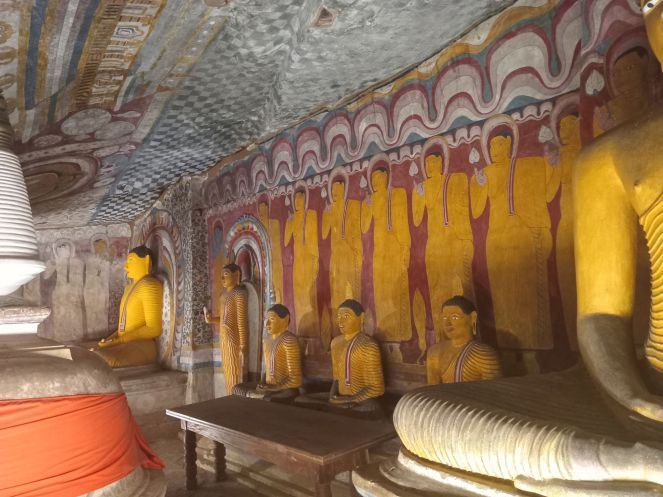
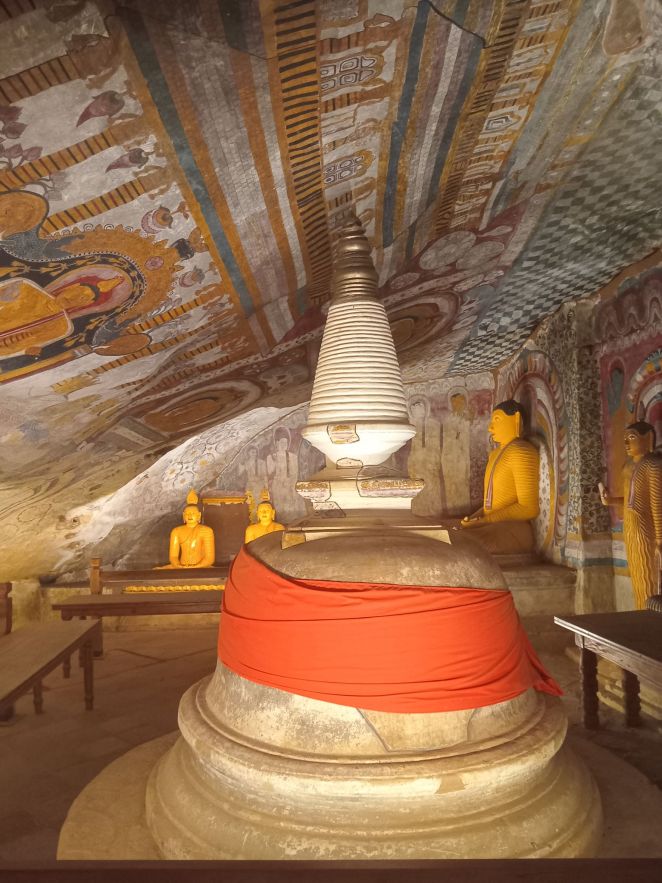
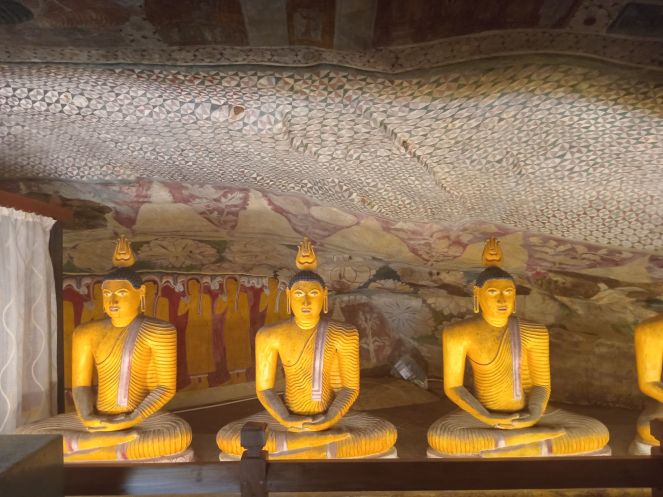


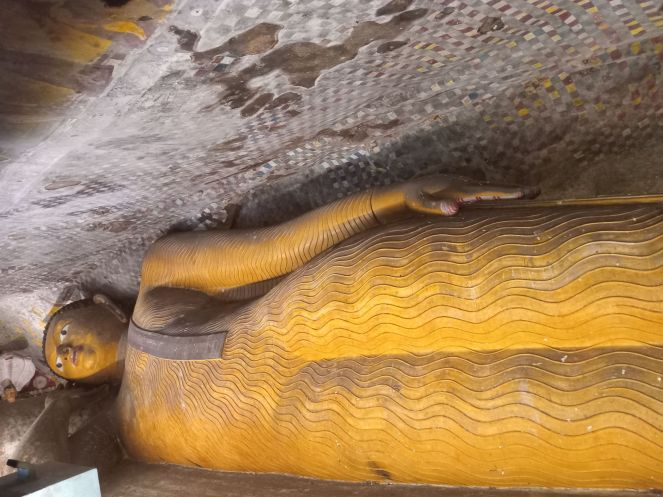
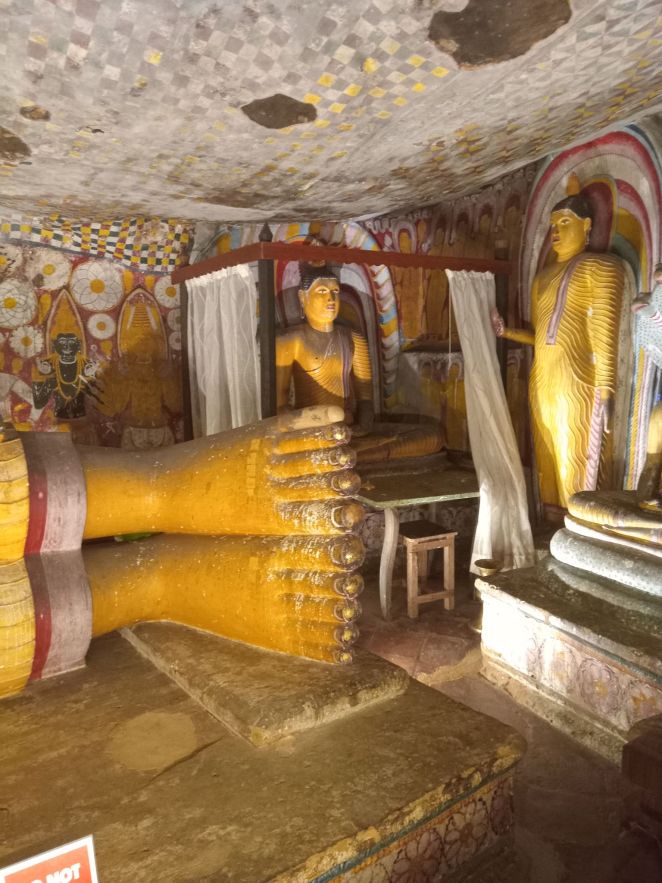
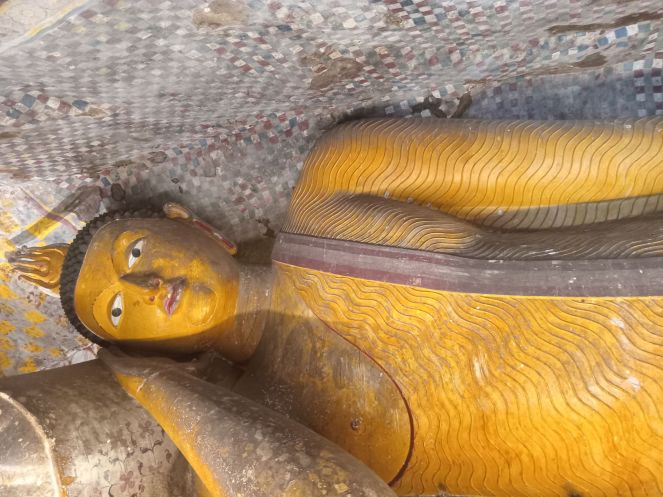
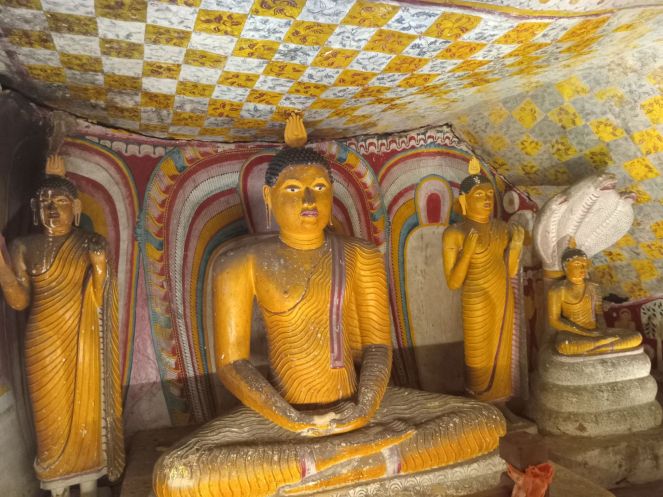
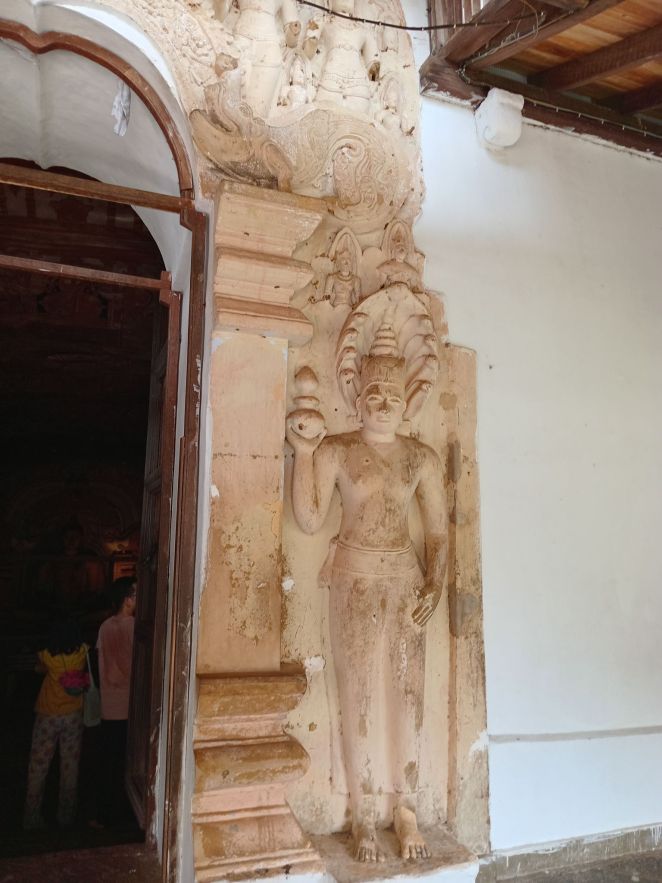
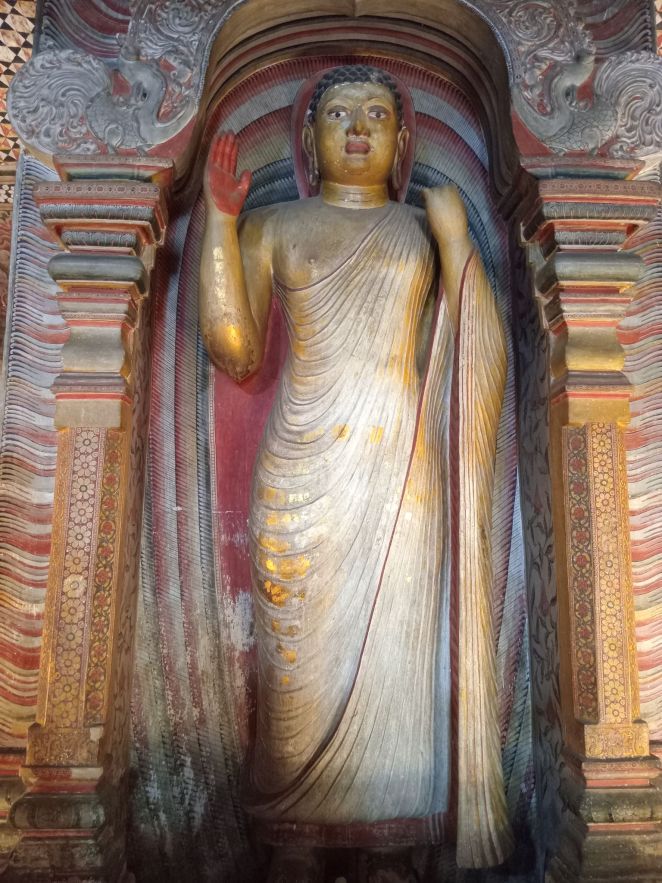

In keeping with a longstanding tradition associated with living Buddhist ritual practices and continuous royal patronage, the cave shrines underwent several renovation and refurbishing programmes before assuming their present interior forms in the 18th century. The vast internal spaces of the cave shrines are not compartmentalized, but are spatially differentiated by a deliberate and subtle arrangement of polychrome sculpture of exceptional craftsmanship and decorated with brilliant compositions of mural paintings. This spatial hierarchy and purposive interior layout devoid of physical divisions lead the devotees systematically through the spaces from one ritual function to the next. The site is remarkable in the Buddhist world for its association with the continuous tradition of living Buddhist ritual practices and pilgrimage for more than two millennia.

